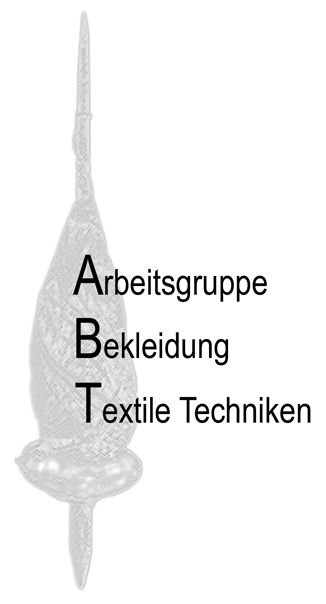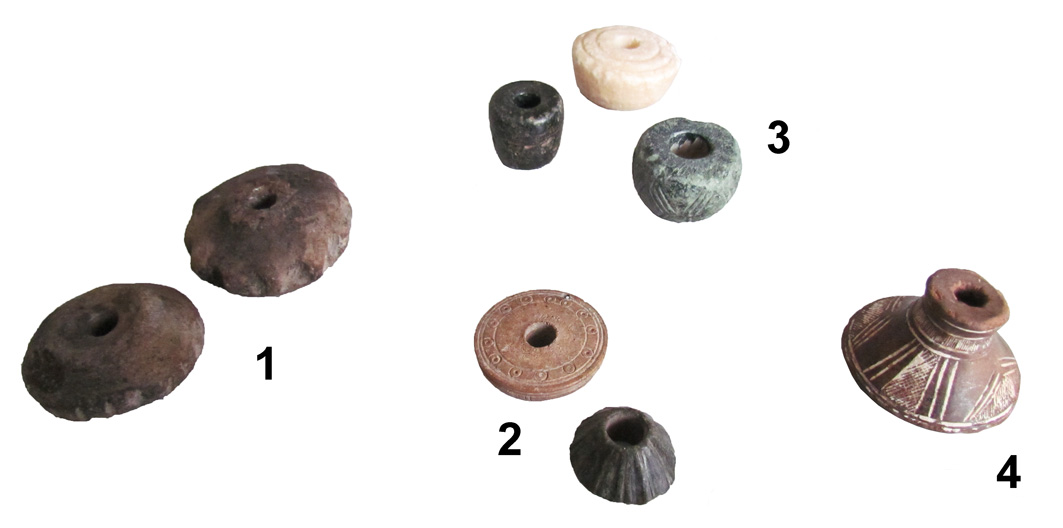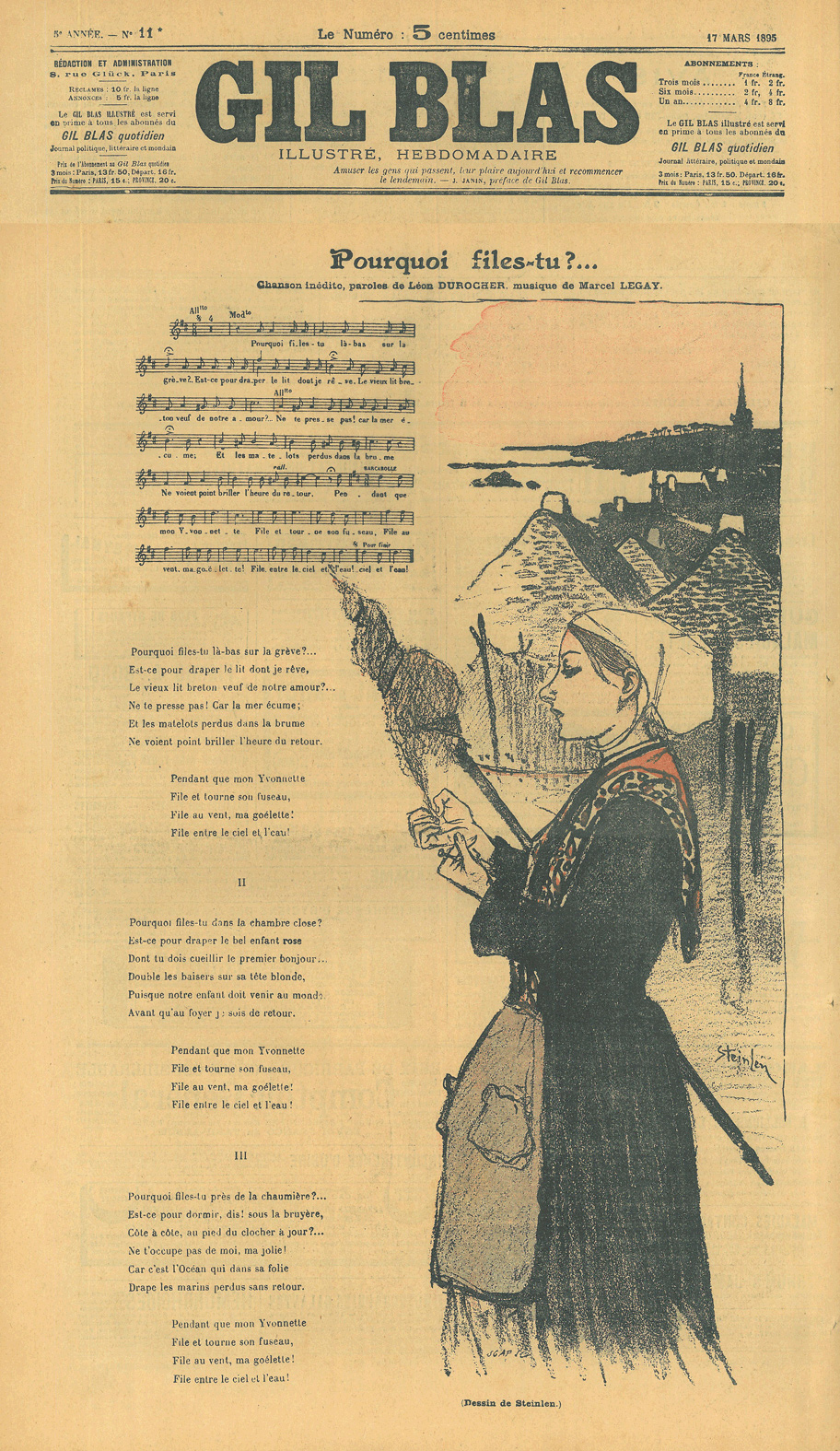Projekte und Forschung
A short spindle typology
ABT
Have you noticed? The logo of the ABT is a hand spindle. Specifically, a drop spindle, still more specifically, a bottom-whorl-drop-spindle. Why so accurate? Anyone who thinks all spindles are the same is wrong. There are many different types, each requiring different service. Of course the desired end result is always the same - the spun yarn, whether it is made of wool, linen, hemp, cotton, silk, etc.
To mark the fifth anniversary of the ABT (founded in autumn 2007) we now want to introduce a small spindle typology with pictures of vintage spindles and postcards with spinners (mainly female spinners) from around the world. We will however restrict ourselves to hand spindles and not cover spinning wheels.
Hand spindles
But first, a brief introduction to different types of hand spindles.
First of all spindles can be divided into drop spindles and supported spindles. Drop spindles are used suspended in the air while supported spindles, as the name implies, are propped up somewhere - on the ground, in a bowl, on the thigh of the spinner or they are held in the hand and rotated between the fingers permanently.
Then one can distinguish spindles as to where the whorl is mounted and how many there are. Some spindles have two whorls, so-called Balkan spindles, while others, mainly supported spindles, have no whorl at all. Whorls may be mounted at the lower end of the spindle shaft, so-called bottom-whorl-spindles, in the middle - center-whorl-spindles, or at the upper end, top-whorl-spindles. Center-whorl-spindles are sometimes also called Akha-spindles referring to the region in Asia where this type of spindle is most commonly in use. While bottom-whorl-spindles are set in motion mainly through twirling between the fingers top- and center-whorl-spindles are brought to speed by rubbing up the thigh.
But enough of that - now to the spindles.
First a small selection of antique spindle whorls made from clay, stone, bronze and bone.

Spindle-types in different countries (comprehensive collection of pictures)
Distaffs
Some hand spindles want a distaff whereon the unspun fibers are fastened.
A distaff is designed to hold the unspun fibers, keeping them untangled and easier to spin. Yet it is also a symbol of domestic life and used to describe the female side of a family – the distaff side - but not only in English. The Middle High German word for distaff is `Kunkel´ and this word is even used in old German laws as a substitute for the word `woman´. Words such as `Kunkellehen´ = `distaff fief´ describe a fief given to a woman to be inherited in the female line.
See: Deutsches Rechtswörterbuch - DRW (German Legal Dictionary)
Why do you spin?
From the magazine Gil Blas vom 17. März 1895
Text: Léon Durocher
Music: Marcel Legay
Illustration: Theophile-Alexandre Steinlen
Pourquoi files-tu?
Pourquoi files-tu là-bas sur la grève?
Est-ce pour draper le lit dont je rêve,
Le vieux lit breton veuf de notre amour?
Ne te presse pas! Car la mer écume;
Et les matelots perdus dans la brume
Ne voient point briller l'heure du retour.
Pendant que mon Yvonnette
File et tourne sou fuseau,
File au vent, ma goélette !
File entre le ciel el l'eau!
II
Pourquoi files-tu dans la chambre close?
Est-ce pour draper le bel enfant rose
Dont tu dois cueillir le premier bonjour,
Double les baisers sur sa tête blonde,
Puisque notre enfant doit venir au monde?
Avant qu'au foyer je suis de retour.
Pendant que mon Yvonnette
File et tourne sou fuseau,
File au vent, ma goélette !
File entre le ciel el l'eau!
III
Pourquoi files-tu près de la chaumière?
Est-ce pour dormir, dis! sous la bruyère,
Côte à côte, au pied du clocher à jour?
Ne t'occupe pas de moi, ma jolie!
Car c'est l'Océan qui dans sa folie
Drape les marins perdus sans retour.
Pendant que mon Yvonnette
File et tourne sou fuseau,
File au vent, ma goélette !
File entre le ciel el l'eau!

Spinning in caricature

"Having finally found a way to use their leisure in Sevastopol."
Lithograph by Honoré Daumier (1808-1879) from the newspaper LE CHARIVARI, 22nd August 1854.
Caricature on the Siege of Sevastopol during the Crimean War (1854-1855) between Russia on the one hand, and the Allies of the Ottoman Empire, France, the UK and from 1855 on also the Kingdom of Sardinia on the other hand. The Russian Black Sea Fleet had scuttled their ships in the harbor of the city and thus prevented an attack by the Allied fleet from the seaward side.
This lithograph shows an admiral and two Turks on a ship's deck spinning - an activity considered completely "unmanly" in the 19th century. They had nothing else to do.